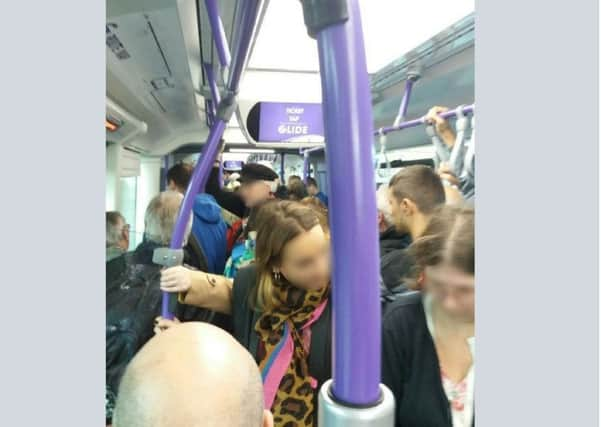After 30 years commuting to east Belfast by bus I can say that the crammed Glider is no improvement '” it is worse


Words like “excellent”, “happy” and “success” about the new Glider bus service left me speechless.
The media have reported some passengers being pleased with the new service and I’ve no doubt that for occasional use at off-peak times, the new Glider may be satisfactory.
Advertisement
Hide AdAdvertisement
Hide AdHowever, for travellers using the service at peak hours this clearly isn’t the case.


Motorists and retailers have their own beef about this new service. I write as a daily commuter.
I’ve been commuting on this route since 1989, and for the first time in nearly three decades, I was forced to stand for the entire journey home on Friday September 7, as did many fellow passengers.
Short term standing occasionally happened before, perhaps due to bad weather or unexpected traffic disruption, but would usually have eased fairly soon.
Advertisement
Hide AdAdvertisement
Hide AdNot so on Friday. The bus remained full from the city centre until just past Stormont (a full 30 mins later).
It stopped to let the odd passenger on or off, but two sets of parents at Holywood Arches (with buggies) couldn’t board.
The previous, day, Thursday it took almost 40 minutes to get in and was crammed most of the way.
This issue was entirely foreseeable and Translink have been disingenuous in publicity about it by promoting the fact that the new vehicles have a capacity for around 100 passengers, 42 sitting and the rest standing.
Advertisement
Hide AdAdvertisement
Hide AdThe double decker vehicles have a similar total capacity (around 96) but the ratio of seating to standing was reversed (74 seats).
The Glider still only accommodates one wheelchair (or so the sign said) so this is no different to before.
An elderly passenger told me she had difficulty getting a rolator on the Glider. She’d been told the ramp was “only for wheelchairs” which left her having to lift the mobility aid onto the bus, with difficulty. She said the seats available to her at floor level ‘threw her about a bit’ but the other seats were unusable because of the high step (approx 10 inches). Who designed these vehicles?
Whatever the computer modelling or desktop research indicated, the introduction of these vehicles isn’t an improvement in practice. The effect isn’t even neutral, it’s detrimental. Here is the reality: at peak times the journey is now uncomfortable, inconvenient, and not any faster.
Advertisement
Hide AdAdvertisement
Hide AdAt least two fellow passengers I know said they’d be back in their cars this week, and one friend who’d hoped to use the new service said ‘no chance’ after observing packed buses at peak times (from his car).
I’m now trying to figure out how I can avoid this awful service altogether having endured another uncomfortable journey to work on Tuesday morning, even though I am deliberately leaving later at 9am, when it was standing by Stormont and full by Knock with no-one allowed on (I took the picture above on my phone further down the route).
Ms L Kennedy, East Belfast